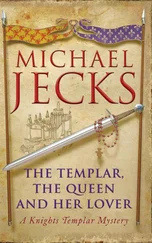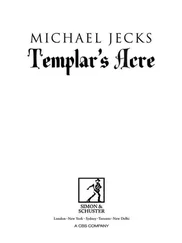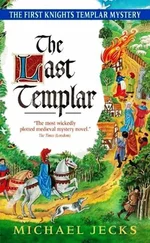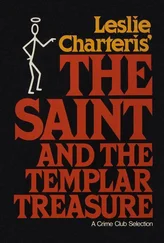It was the same one-sided conversation that they had each and every night.
As he turned to leave, Dolf glanced at the framed picture hanging on the wall next to his mother’s chair. The faded photograph, published in a 1943 edition of the Völkische Beobachter newspaper, was of a six-year-old girl with long blonde braids attired in a traditional dirndl dress. Arms extended, she offered the Führer a slice of freshly baked black bread on an ornately carved wooden platter. Taken during Walpurgisnacht , the pagan spring festival when bonfires burned bright to lure witches from their covens, the photograph had captured the hearts and souls of the German people. Enthralled by the sight of their Führer with such a lovely child, households across the Reich framed the photograph and hung it alongside their cherished family portraits.
An overnight celebrity, his mother, Hedwig Krueger, became known to an entire generation as ‘the Führer’s Little Handmaid’.
Before she lapsed into a demented state of mind, his mother often spoke of that long ago May day, fondly recalling how the Führer, his piercing eyes as blue as the lake waters at Königsee, pinched her cheek and squeezed her shoulder, thanking her profusely for the slice of schwarzbrot.
Dolf stared at the photograph for a few more seconds before turning to leave.
When he was a young boy and his mother would tuck him in at night, she used to always tell him that good things come to those who wait.
At thirty-seven years of age, Dolf Reinhardt was tired of waiting.
57
Mont de la Lune, The Languedoc
2159 hours
Catching his first glimpse of the stacked mound of kindling and the dour-faced Dominican priest, Cædmon’s heart slammed against his breastbone.
‘There’s been a mistake!’ he fearfully exclaimed. ‘I’m not supposed to be here!’ ‘Here’ being an unlit funeral pyre at the foot of Montségur.
The priest smiled humourlessly. ‘This is penance for your sins.’
‘What sins?’ he demanded to know as two soldiers, each garbed in a bright blue surcoat emblazoned with a white fleur-de-lis, roughly grabbed him by the arms and dragged him to the pyre. Grinning, they bound him, hand and foot, to a stake in the middle of the wood stack. Horrified, he stared at the fleur-de-lis. The monarch’s royal lily.
‘Repent, sinner!’ the priest commanded in a booming voice.
‘But I did nothing wrong!’
‘You were born with the taint of original sin.’
‘At least I don’t bugger little boys on the sly!’ he shot back. ‘How many indulgences did that cost, you feckless bastard?’
The Dominican motioned for the fire to be lit. Then, wearing the sneer of the self-righteous, he said calmly , ‘ “Nulla salus extra ecclesium.” ’
Outside the Church there is no salvation.
Christ.
Almost immediately, the flames set his khaki trousers ablaze. Cædmon screamed, the pain of seared flesh more than he could bear.
‘For the love of God! Give me another chance!’
‘Am I dead?’
Grappling with the odd sensation of being tethered to his own corpse, Cædmon opened his eyes. To his dismay, he could perceive no difference in the tarry gloom. Even more worrisome, his chest cavity felt empty. Hollowed out. Ready for the Egyptian embalmers to begin the laborious task of mummification.
‘Ah … still among the living,’ he murmured a few seconds later, able to hear his own faint breath. Unwilling to take a chance with the grim reaper hovering so near, he inflated his lungs with a robust, life-affirming gulp.
It came as something of a surprise to realize that he wanted to live.
While there had been times over the course of the last two years when he thought death might be a welcome alternative, he now knew that was an illusion born of grief. The same dark illusion that usually induced a burst of frantic regret somewhere between the sixth and fifth floor.
He reached for his water bottle, the side of his hand bumping against the defective torch. A split-second later, the light came on, the narrow confines of the tunnel softly illuminated.
‘There is a God,’ he murmured.
Turning on to his belly, he took a swig of water before packing the bottle in his rucksack. In the golden beam, he could see that the tunnel took a sharp turn up ahead. Shoving the rucksack and flashlight in front of him, he doggedly squirmed forward. He’d come too far to back out of the venture.
A few minutes later, grunting, he navigated the tight turn, worming his way into a small vestibule. Although there wasn’t enough room to stand upright, he was able to squat comfortably. As he inspected the space, he noticed that one of the walls was constructed of densely packed rubble rock. A false wall! Lacking excavation tools, he clawed excitedly at the rocks with his bare hands.
Ten minutes of diligent digging exposed a small opening. Cædmon poked his head through the breach.
Un-bloody-believable!
Bowled over, he stared in wonderment at the hidden chamber. Scores of stalactites dripped like icicles while stockier stalagmites rose up from the rock floor. A few had conjoined, giving birth to lone columns, the unexpected juxtaposition of wobbly shapes breathtakingly surreal. Imbedded mica and crystallized rock created a shimmery effect. In a word, it was spectacular. A limestone cathedral hidden in the depths of Mont de la Lune.
The fact that the cavern had been deliberately hidden made him eager to explore. Wriggling his way through the opening, Cædmon stood upright, taking heed not to touch the fragile rock formations.
‘ “Take my counsel, happy man; act upon it if you can,” ’ he sang in a deep baritone, testing the acoustics with the silly Gilbert and Sullivan ditty. Enchanted, he listened to the sound of his own voice echoing back at him.
Torch in hand, he turned in a slow pirouette, shedding light on numerous nooks and niches. Any one of which could have concealed a treasure. Near the end of the rotation, his breath caught in his throat.
The cathedral had an altar!
Hurriedly wending his way between the limestone formations, he approached the simple altar comprised of a granite slab supported by two sturdy boulders. However, it wasn’t the altar that ensnared his attention; it was the stone ossuary prominently displayed in the middle of the slab. In ancient times, ossuaries were used to store the bones of the dead.
Excitement mounting, he shined the torch on the limestone box. As he did, he lightly grazed his fingers over the elaborately incised sides that depicted the sun, moon and a star. The same symbols that were on the Montségur Medallion. He tucked the torch under his arm. His mind racing wildly at the thought of whose bones might be nestled inside the box, he slowly raised the lid.
‘How utterly extraordinary!’ he marvelled, astonished to find not a set of desiccated bones, but a golden statuette.
Even more astounding, it was a figurine of the Egyptian goddess Isis. Nearly a foot in length, the idol clutched a small ankh, had a star on her headdress with cow horns and wore a sun orb menat necklace. Isis, who ruled the heavens and governed the depths of the earth. Isis, who could create and destroy with equal aplomb. Isis, who lovingly gathered the dismembered pieces of her mutilated husband Osiris so that she could conceive her divine son Horus.
Isis. Whom the ancient Egyptians revered as ‘the Mother’.
Cædmon adjusted the torch beam to better examine the figurine. Although the outer layer of gold leaf was remarkably well preserved, enough of it had flaked away for him to see that the idol was actually cast from bronze. Since Egypt was the only civilization in the ancient world to gild bronze, the idol’s provenance was indisputable. If he had to make an educated guess, he’d date the figurine to the Ramses Dynasty. Which meant that it was at least three thousand years old.
Читать дальше












